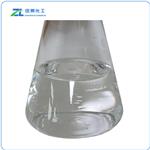Butyl Isovalerate is a clear liquid. Molecularweight =158.27; Boiling point = 150℃; Flash point =53℃. Hazard Identification (based on NFPA 704 M RatingSystem): Health 0, Flammability 2, Reactivity 0. Insolublein water.
Butyl isovalerate has an odor reminiscent of the isobutyl ester with a sweet, apple-like taste.
Butyl Isovalerate is a clear liquid. B.P. 167℃.
Sp.Gr. 0.86. Almost insoluble in water, soluble in Propylene glycol, miscible with alcohol and most
oils. Ethereal-fruity, Apple-like, somewhat pungent odor. Sweet-fruity taste, reminiscent of Apple,
Raspberry, with a winey note.
Reported found in the oil from leaves of Eriostemon coxii and Phebalium dentatum; also in apricot, banana,
cheeses, olive and plum.
Butyl isovalerate is occasionally used in flavor compositions,
mainly in Chocolate flavors and fantasy fruit
or Tutti-frutti, etc. Concentrations are normally about 50 ppm
in the finished product.
By prolonged boiling of the acid with n-butyl alcohol in benzene in the presence of concentrated H2SO4. By direct esterification of n-Butanol
with iso-Valerie acid under azeotropic conditions.
ChEBI: Butyl 3-methylbutanoate is a fatty acid ester.
Taste characteristics at 5 ppm: fruity, sweet, pineapple, ripe, musty and green with a slight cheesy nuance.
May be used as a specialty solvent;
food additive
If this chemical gets into the eyes, remove anycontact lenses at once and irrigate immediately for at least15 min, occasionally lifting upper and lower lids. Seek medical attention immediately. If this chemical contacts theskin, remove contaminated clothing and wash immediatelywith soap and water. Seek medical attention immediately. Ifthis chemical has been inhaled, remove from exposure,begin rescue breathing (using universal precautions, including resuscitation mask) if breathing has stopped and CPR ifheart action has stopped. Transfer promptly to a medicalfacility. When this chemical has been swallowed, get medical attention. Give large quantities of water and inducevomiting. Do not make an unconscious person vomit.
Color Code—Red: Flammability Hazard: Store in aflammable liquid storage area or approved cabinet away fromButyl isovalerate 479ignition sources and corrosive and reactive materials. Prior toworking with this chemical you should be trained on itsproper handling and storage. Before entering confined spacewhere butyl isovalerate may be present, check to make surethat an explosive concentration does not exist. Store in tightlyclosed containers in a cool, well-ventilated area. Metal containers involving the transfer of this chemical should begrounded and bonded. Where possible, automatically pumpliquid from drums or other storage containers to process containers. Drums must be equipped with self-closing valves,pressure vacuum bungs, and flame arresters. Use only nonsparking tools and equipment, especially when opening andclosing containers of this chemical. Sources of ignition, suchas smoking and open flames, are prohibited where this chemical is used, handled, or stored in a manner that could create apotential fire or explosion hazard
UN3272 Ethers, n.o.s., Hazard class: 3; Labels:
3—Flammable liquid. UN1993 Flammable liquids, n.o.s.,
Hazard Class: 3; Labels: 3—Flammable liquid, Technical
Name Required
Vapor may form explosive mixture with
air. Reaction, possibly violent, on contact with oxidizers.
Compounds of the carboxyl group react with all bases, both
inorganic and organic (i.e., amines) releasing substantial
heat, water and a salt that may be harmful. Incompatible
with arsenic compounds (releases hydrogen cyanide gas),
diazo compounds, dithiocarbamates, isocyanates, mercaptans, nitrides, and sulfides (releasing heat, toxic and possibly flammable gases), thiosulfates and dithionites (releasing
hydrogen sulfate and oxides of sulfur)
Dissolve or mix the material
with a combustible solvent and burn in a chemical incinerator equipped with an afterburner and scrubber. All federal,
state, and local environmental regulations must be
observed.



